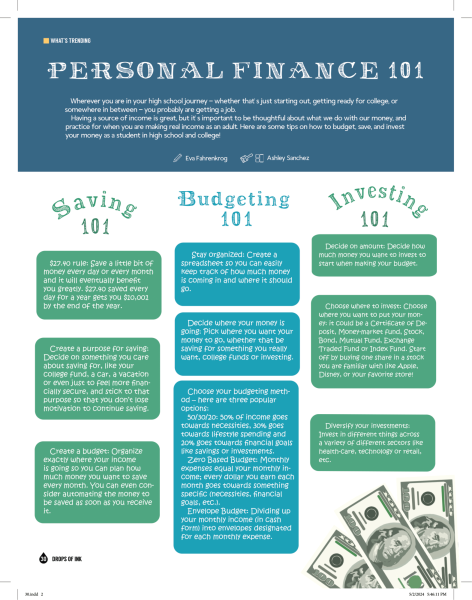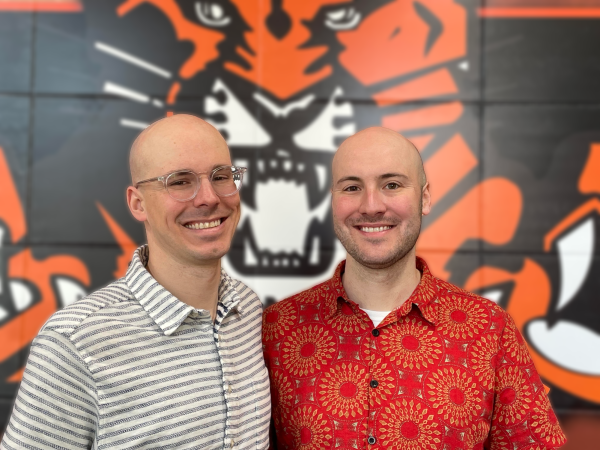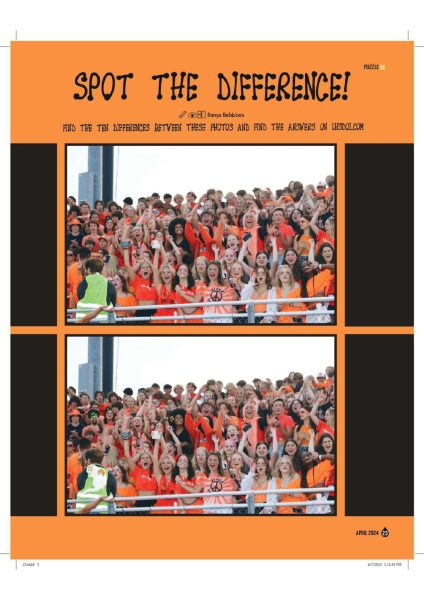Gender Division in AP and Elective Classes
For years, many students have perceived math and science courses as part of the male domain and humanities-based classes, like history and literature, to be female areas of studies. This perception of classes fitting gender roles and expectations is prominently seen at Libertyville High School in certain AP and elective classes.
While certain classes, like AP Statistics and AP Chemistry, have a relatively even mix between genders, others, including AP Physics C, Preschool and Personal Finance, have a significant divide. Using data provided by LHS’s two data specialists, Mrs. Lisa Davis and Mrs. Margaret Nicholson, from this school year, it was found that AP Physics C is 40 percent female and 60 percent male; Preschool is 100 percent female; and Personal Finance is 32 percent female and 68 percent male. Additionally, AP English Literature and Composition is 75 percent female and 25 percent male, and Automotive Technology is 11 percent female and 89 percent male. These are only a handful of classes that feature a distinct gender gap at LHS.
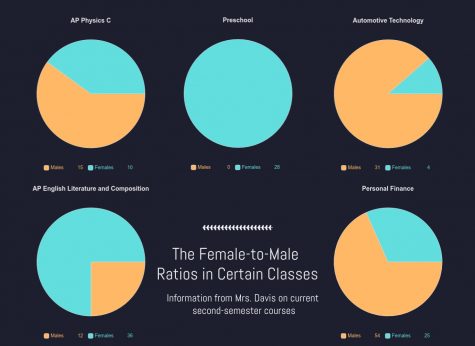
Mrs. Kristen Connolly instructs the personal finance classes at LHS, which tend to be heavily male-dominated.
“I think it’s just a student choice and where their passion and interests lie, and it seems like it is a course that seems to have more interest in the male population,” she said.
Mr. Robert Kelch, who teaches automotive technology and other classes, explained that he “think[s] naturally [auto] lends itself towards males. I think it’s something that’s always been indicative of this particular area…It doesn’t mean women don’t take it, it just means that women are [inclined] to [take something] else,” he said.
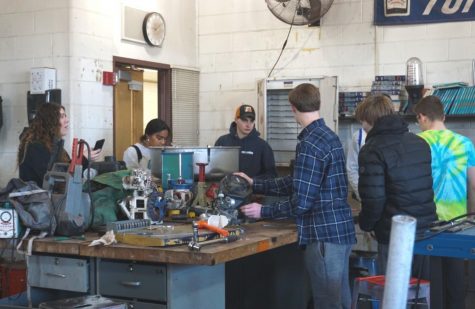
According to Mr. Kelch, there is often a stigma around female students taking classes like Automotive Technology, which is usually considered to be a “boy’s class.”
Recent studies, such as the Global Gender Gap Report, have shown that women are underrepresented in STEM fields; that acronym stands for science, technology, engineering and math. This study was conducted in Switzerland by the World Economic Forum and revealed that men are underrepresented in fields such as education, health care and welfare. The study presented the idea that gender segregation in these career fields often leads to the stereotypical belief that women lean to jobs focusing primarily on helping others within the community, while men tend to sway to more technical jobs in the STEM fields.
The study also showed that this stereotypical belief often influences the career paths of young adults. If education and health-related jobs are seen as “female jobs,” then both genders reinforce the perception that those careers belong in the female domain.
Another study which demonstrates the stereotypical belief that the STEM field is the male domain is an experiment created by David Chambers, the Draw-A-Scientist-Test. The experiment has students from grades ranging from kindergarten to high school draw a scientist or any professional in the STEM fields. Very few of the drawings consisted of female professionals; most of them consisted of drawings of a male in a white lab coat. This brings up the idea of how gender stereotypes influence children starting at a young age and how they perceive the female and male career domains.
LHS science department supervisor Mr. Pete Dawson commented that one feature the Global Gender Gap Report highlighted was that ”women tended to pick up reading skills earlier than their male counterparts and tended to have an advantage in places where they can use that part in their career even if they’re good in math [classes].’’
Although reading skills aren’t necessarily a crucial component of the preschool class, the teacher for that course, Mrs. Kristin Tarrant, said that for the past couple years, no males have enrolled in her class.
“I don’t know if people just assume that when it comes to working with kids, that’s more of a female role or if there’s a stigma like, ‘Oh, I’ll get made fun of if I want to take a preschool class,’ which is funny because some of the best students I’ve had that the preschoolers respond most to are my male students,” she remarked.
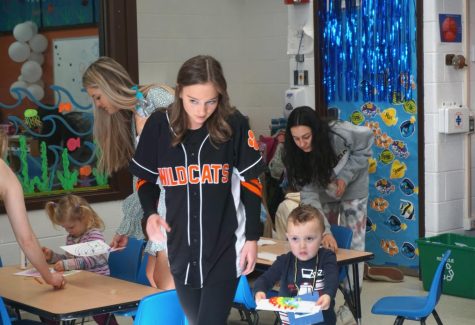
It’s been about two years since there has been a male student enrolled in Mrs. Tarrant’s Preschool class, she said.
Mrs. Tarrant also described how many outside forces may contribute to the lower numbers of males taking her class: “I think how [students] perceive [working with] kids and how they’ll be looked at if they take certain classes and what their friends might think influences [the classes they take], or maybe even what their parents are telling them.”
One teacher of another female-dominated course is Mr. Ryan Ebling. The AP English Literature teacher commented, “I wouldn’t want AP Lit to be seen as a ‘girls’ class; I don’t like that physics is seen as a ‘boys’ class. This is actually something that I’ve been wrestling with a lot, not just with boys classes and girls classes, but just everywhere in this school, the way that there is such a clear gender divide and such a clear gender hierarchy of preference being given to boys.”
Mr. Ebling believes that one of the only ways to fix this problem is by being willing to talk about the issue and by admitting that things are not where they are supposed to be.
“I think there are still some very outdated and unspoken ideas of gender norms, that we’re preparing boys for a different future than we are for girls,” Mr. Ebling said. “I think there is still culturally around here an idea that boys are going to go get careers and girls aren’t necessarily, although some will, which is why I think it’s so important why Dare to Empower (a group for female-identifying students aimed at amplifying the voices of women) and other people are trying to break this mindset.”
Mr. Mike Bush teaches AP Physics C and explained how it is generally a senior course and therefore many factors can influence students from taking it, such as past seniors or students’ own interests in science.
“We try to promote and advertise and do as much as we can here, but we don’t know what type of messages students have been getting prior to high school or during high school,” he said.
In the auto mechanics course, Mr. Kelch tries to bridge the image of the class being one for males. “One of the projects that really lends itself to that is the engine rebuilding and definitely the welding. Boys like fire and sparks and melting stuff and that’s great, but the execution of [the engine rebuilding] lends itself much more to girls because they take their time and follow directions better.”
Sophomore Debjani Maitra is currently taking AP Economics, which is 82 percent male and only 18 percent female. She explained that “sometimes it is hard to speak up if there’s a lot of guys and there’s a minority of girls. It is definitely a different dynamic for a class.”
Maitra insisted that students shouldn’t be worried about the gender divide in certain classes. Instead, they should go in open-minded, not be afraid to participate and enjoy the class regardless of what other people think.



